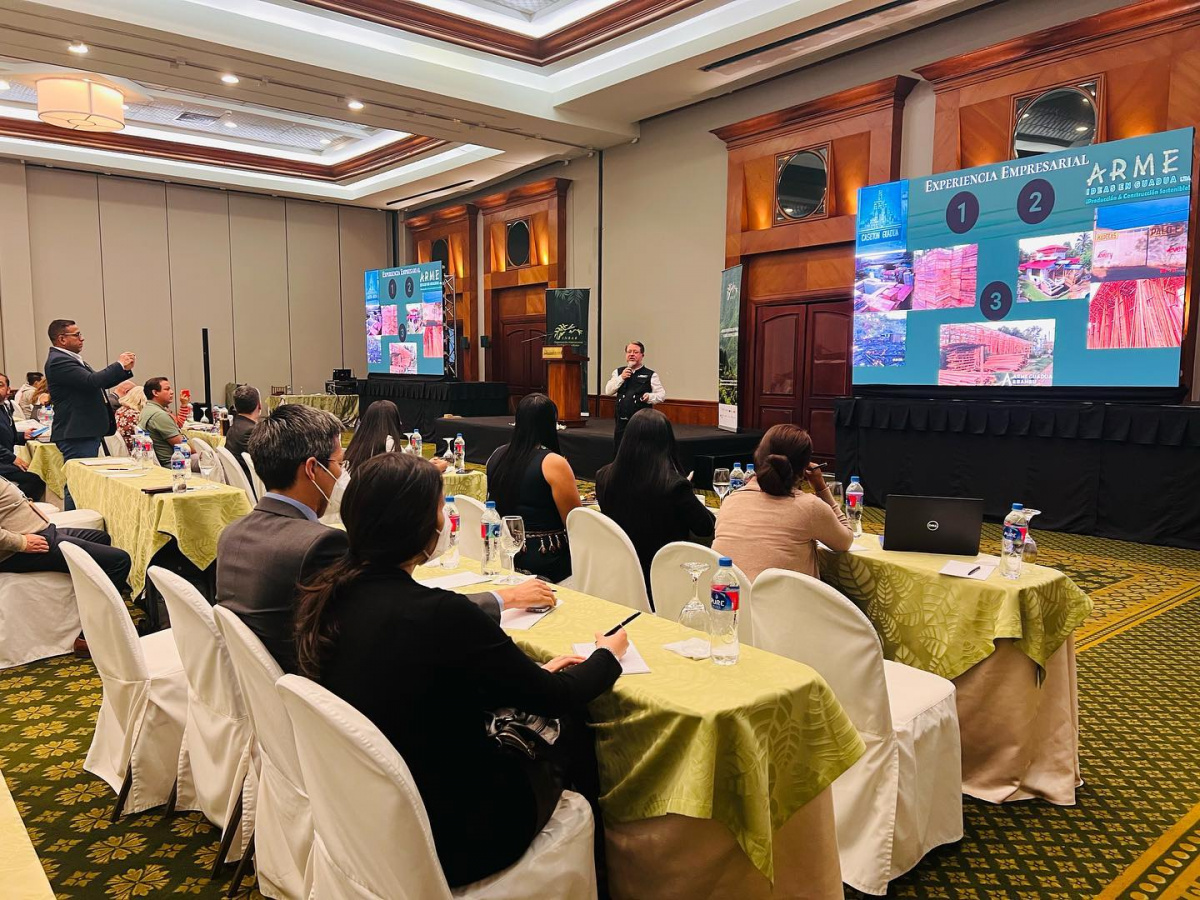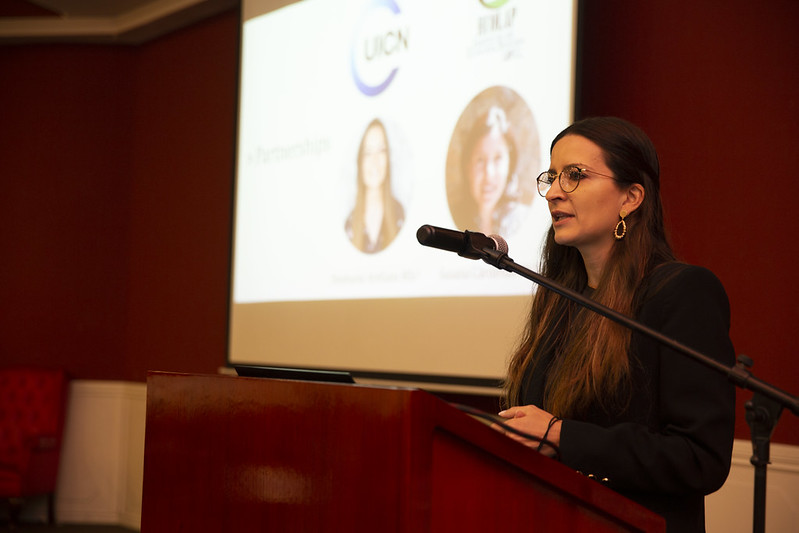New research reveals global progress on including gender in Nationally Determined Contributions (NDCs)
This Gender Day at COP26, the latest IUCN research shows that countries around the world increasingly recognise women as vital stakeholders and agents of change in urgent climate action
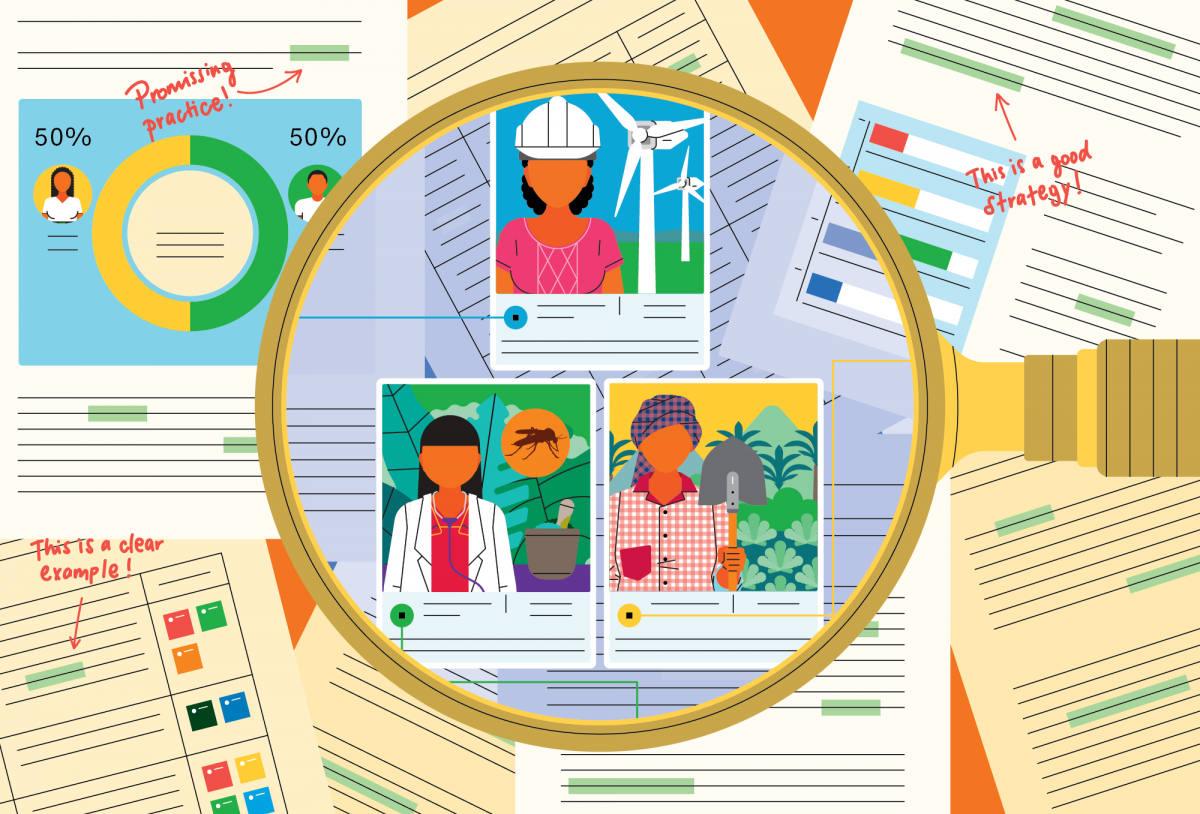
Photo: Estudio Relativo for IUCN
09 Nov 2021, Glasgow, Scotland, United Kingdom – Climate change threatens the safety, security, health and well-being of all people, communities and countries throughout the world. However, its impacts are not felt equally – due to persistent gender inequality – and women are also often left behind in accessing climate-related services and opportunities to contribute to solutions to the global climate crisis. Under the Paris Agreement and its implementation guidelines, Parties are called to revise and implement Nationally Determined Contributions (NDCs) that are gender-responsive and participatory.
On Gender Day at COP26, IUCN unveils its latest research on how countries have integrated gender within revised/updated NDCs. The report, Gender and national climate planning: Gender integration in the revised Nationally Determined Contributions, studies 89 revised/updated NDCs to identify and understand how many, and to what extent, countries have integrated gender in their plans. This analysis aims to measure global progress on the inclusion of gender considerations and the adoption of gender-responsive policies and programming, showcasing good examples of gender-responsive components.
In this new study, 78% of NDCs (69 of the 89 NDCs reviewed) include at least one mention of gender – up from 40% (or 65 out of 162 Intended NDCs reviewed in the 2016 IUCN baseline analysis). Furthermore, Latin America and the Caribbean and Sub-Saharan Africa are regional leaders, with 18 out of 18 NDCs (or 100%) and 17 out of 18 NDCs (or 94%), respectively, including gender considerations.
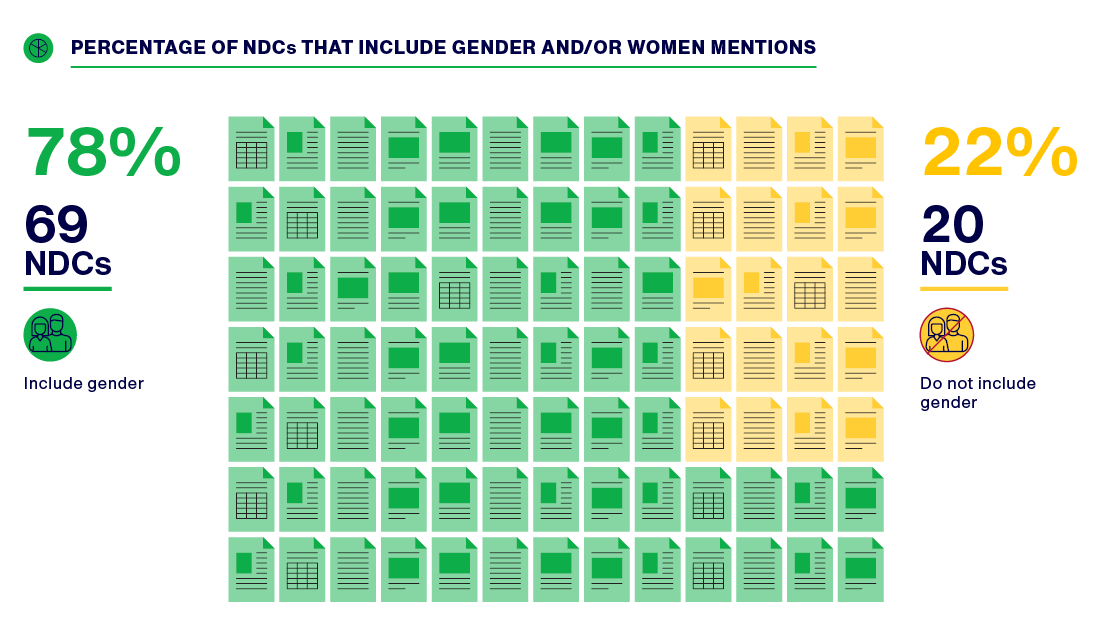 Photo: Estudio Relativo for IUCN
Photo: Estudio Relativo for IUCN
The key findings of this study suggest a move toward greater alignment with international standards and Parties’ commitments on gender equality. This progression may further signal the importance that these Party-led commitments have had in further ensuring gender equality goals are integrated into climate actions, as seen in the varied examples of how gender equality can be mainstreamed in climate change policies and planning processes.
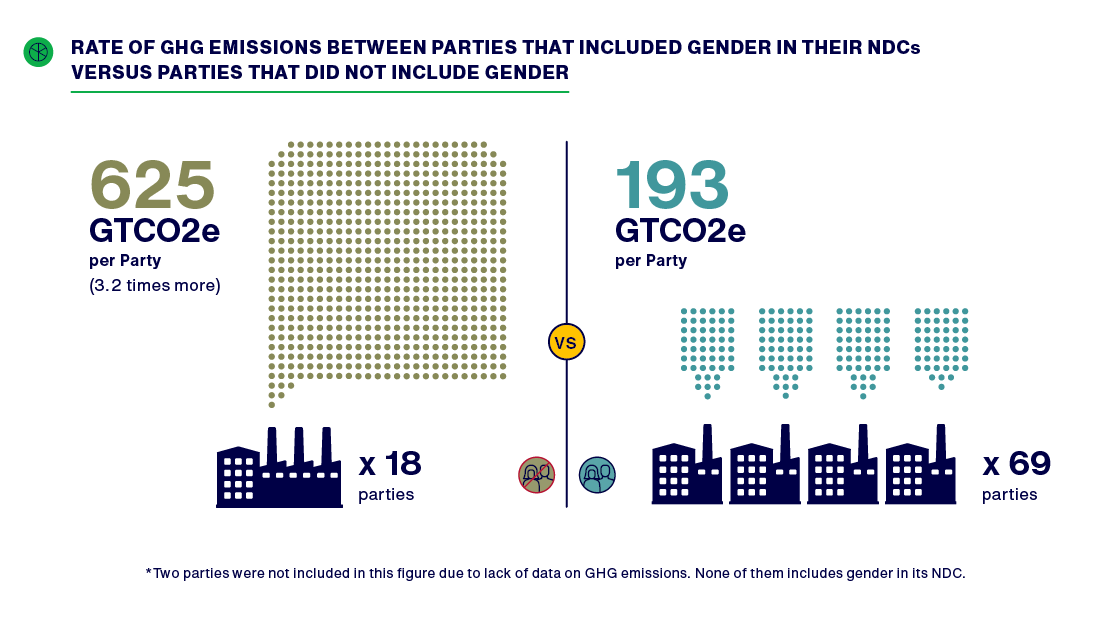 Photo: Estudio Relativo for IUCN
Photo: Estudio Relativo for IUCN
Yet, while incredible progress has been made, room for improved integration remains as approximately a quarter of NDCs are gender-blind, making no mention of the gendered experiences or roles that women and men have. These countries also emit, on average, more than three times the amount of GHGs as Parties who have included gender. In addition, only a limited number of NDCs include gender within specific climate sectors: 16% (14 NDCs) include gender in both adaptation and mitigation sections; 37% (33 NDCs) include gender in adaptation; and 18% (16 NDCs) include gender in mitigation.
However, this analysis reveals numerous examples of countries taking action to identify and close gaps, and can serve as inspiration to other Parties who have yet to submit revisions. For example, Georgia’s NDC identifies a range of vulnerable groups as requiring urgent adaptation measures, including eco-migrants, children and adolescents, women, elderly persons and more. In Honduras, women and men are recognised as important change agents across climate sectors with specific contributions, needs and preferences that must be taken into account. In Malawi’s NDC, the Ministry of Forestry and Natural Resources is implementing an activity to promote gender mainstreaming in its mitigation policies, programmes and projects with a dedicated budget.
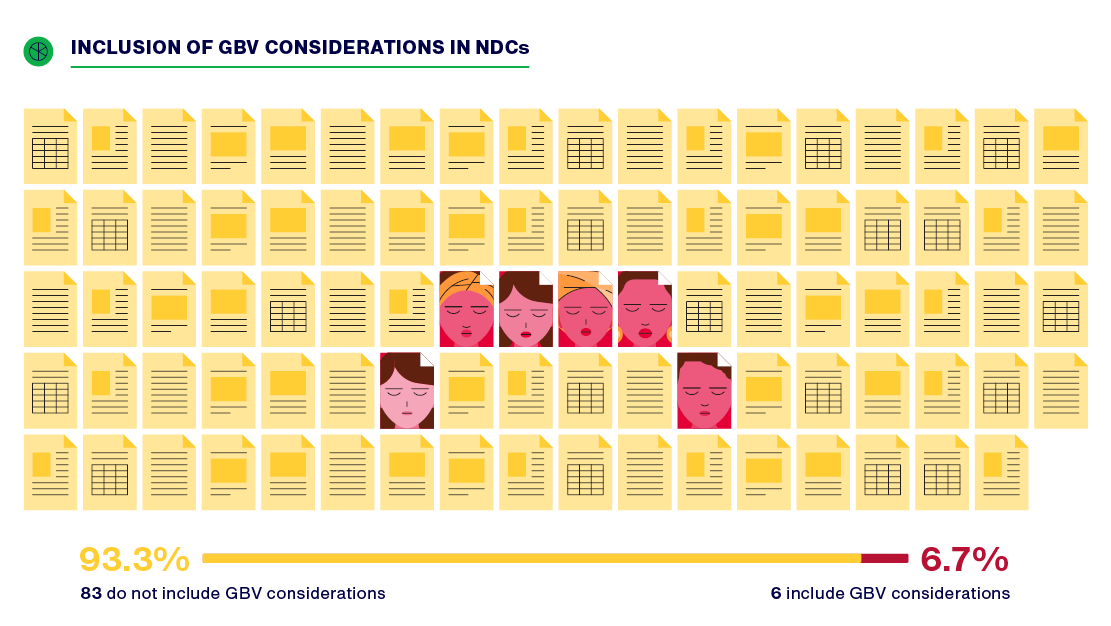 Photo: Estudio Relativo for IUCN
Photo: Estudio Relativo for IUCN
It is also worth noting that countries are paying attention to barriers to climate resilience for all individuals, by addressing intersectionality, inclusion and overcoming historic inequities. Specific activities include attention to gender-based violence (GBV), Indigenous women, and lesbian, gay, bisexual, transgender, queer, and intersex (LGBTQI+) inclusion, for example.
To ensure the rights of all, inclusive and participatory climate policymaking, planning and implementation are necessary. Together, countries are shedding light on how a climate-resilient world values, protects and promotes gender equality and women’s empowerment.

